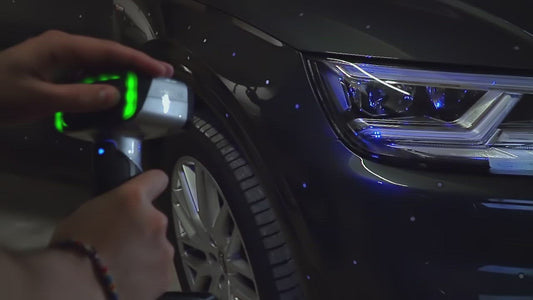The world of 3D scanning is on an impressive trajectory, capturing the attention of industries far and wide with its capability to digitize the physical world with astonishing accuracy and speed. 3D scanning technology is revolutionizing how we approach design, manufacturing, and preservation.
With each passing year, new trends emerge, shaping the future of this technology and expanding its applications. Let’s explore the burgeoning trends that are shaping the 3D scanning industry and take a peek into the future.
Artificial Intelligence
Imagine a system that captures every minuscule detail of an object and categorizes its features almost like a human would but with greater speed and precision. Now, this is no longer a flight of fancy. AI algorithms can process 3D data to identify inconsistencies and predict potential errors before they even happen, making these advanced scanning systems smarter than ever.
Enhanced Accuracy
Precision is paramount, whether you’re creating custom-fit medical devices or replicating art for digital archives. Thanks to advancements in sensor technology and sophisticated software, today’s 3D scanners can capture tiny details that were once impossible to digitize. This improved accuracy ensures that the resulting models are a near-perfect representation of the original and significantly reduces the time and cost associated with subsequent design and production processes.
Cloud Uploading
Picture a world where you can upload the voluminous data from 3D scans directly to the cloud almost instantaneously. This advancement simplifies the storage of massive 3D files and facilitates seamless access and sharing among teams. This shift to cloud-based workflows signifies a leap toward a more connected and agile working environment, enabling rapid iterations and decision-making and ultimately accelerating project timelines.
Augmented and Virtual Reality
Augmented reality (AR) and virtual reality (VR) are adding an exciting, immersive dimension to the 3D scanning experience. By incorporating these technologies, users can view 3D models on a screen and step inside them in a virtual space. This is especially groundbreaking for industries such as real estate and construction, where clients can take virtual tours of properties or see changes to a building design before any real-world modifications. Similarly, in education, students can analyze and inspect ancient artifacts or complex biological structures within a classroom setting.
Portable Solutions
Portable scanners make it possible to capture high-quality 3D data on-site, whether in a workshop, at an archaeological site, or at an architectural landmark. The convenience of this technology allows for a more spontaneous scanning process, where the opportunity to digitize objects or environments arises unexpectedly. With the capability to easily transport these scanners, users can quickly move from one location to another, increasing the versatility and applications of 3D scanning.
The 3D scanning industry is undergoing a transformative phase, marked by fascinating trends, breathtaking innovations, and a widening horizon of possibilities.
If you want to revolutionize the way your business approaches design and manufacturing, 3D Wonders has what you need to keep up with the rapid changes in technology. Our portable 3D laser scanner gives you the convenience of scanning on the fly and comes with the ability to capture small, complex objects with pinpoint accuracy.






